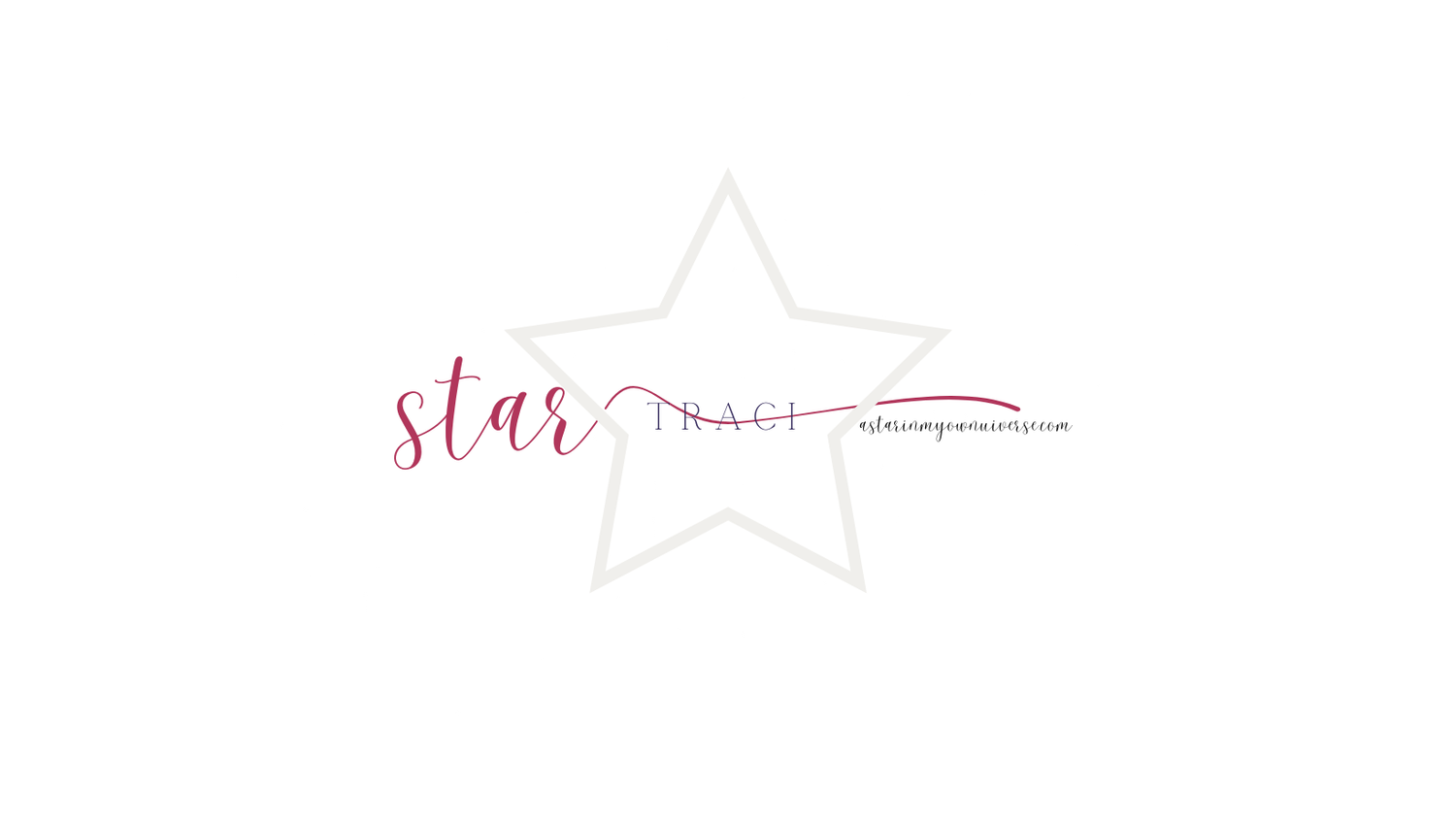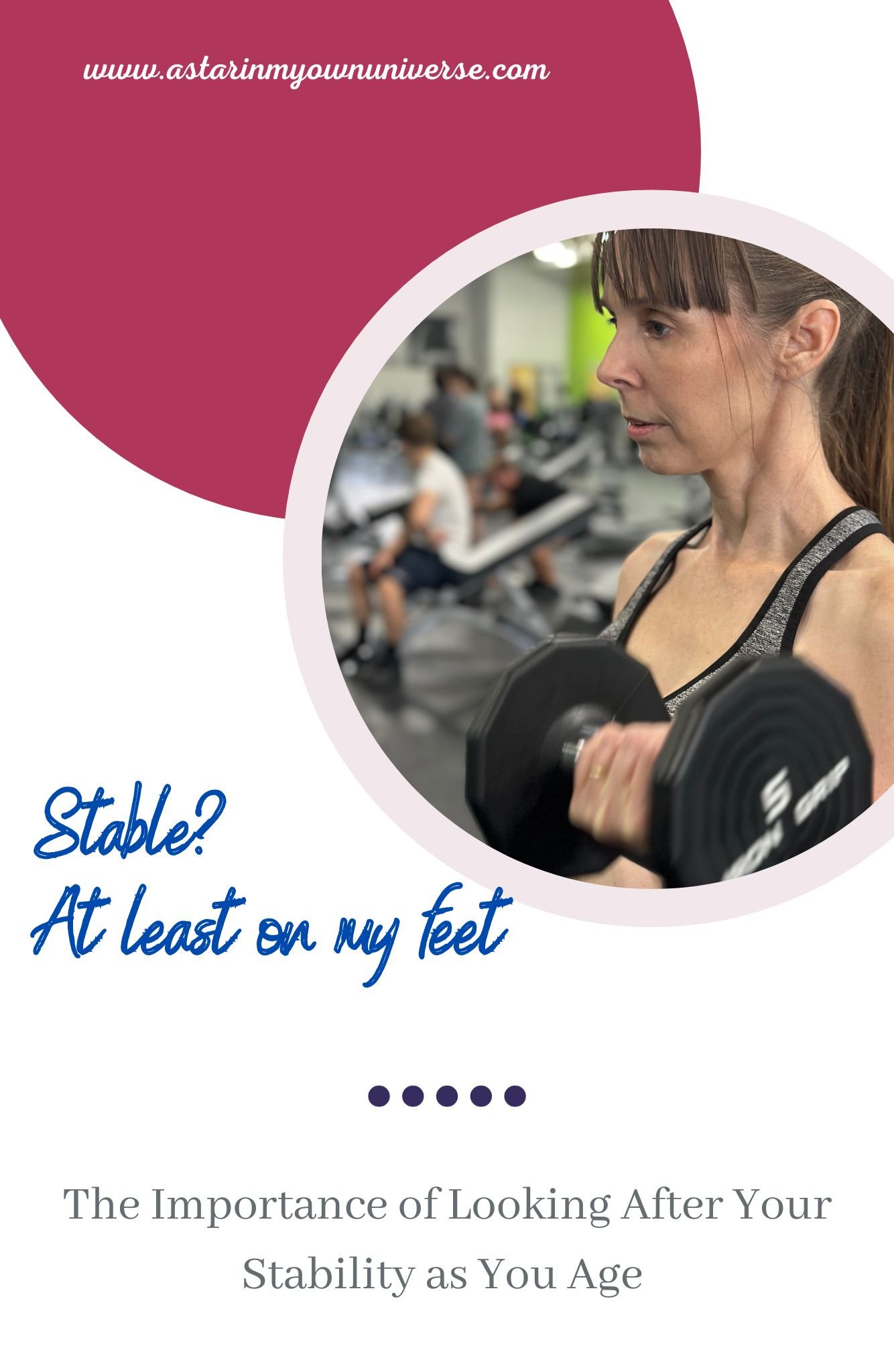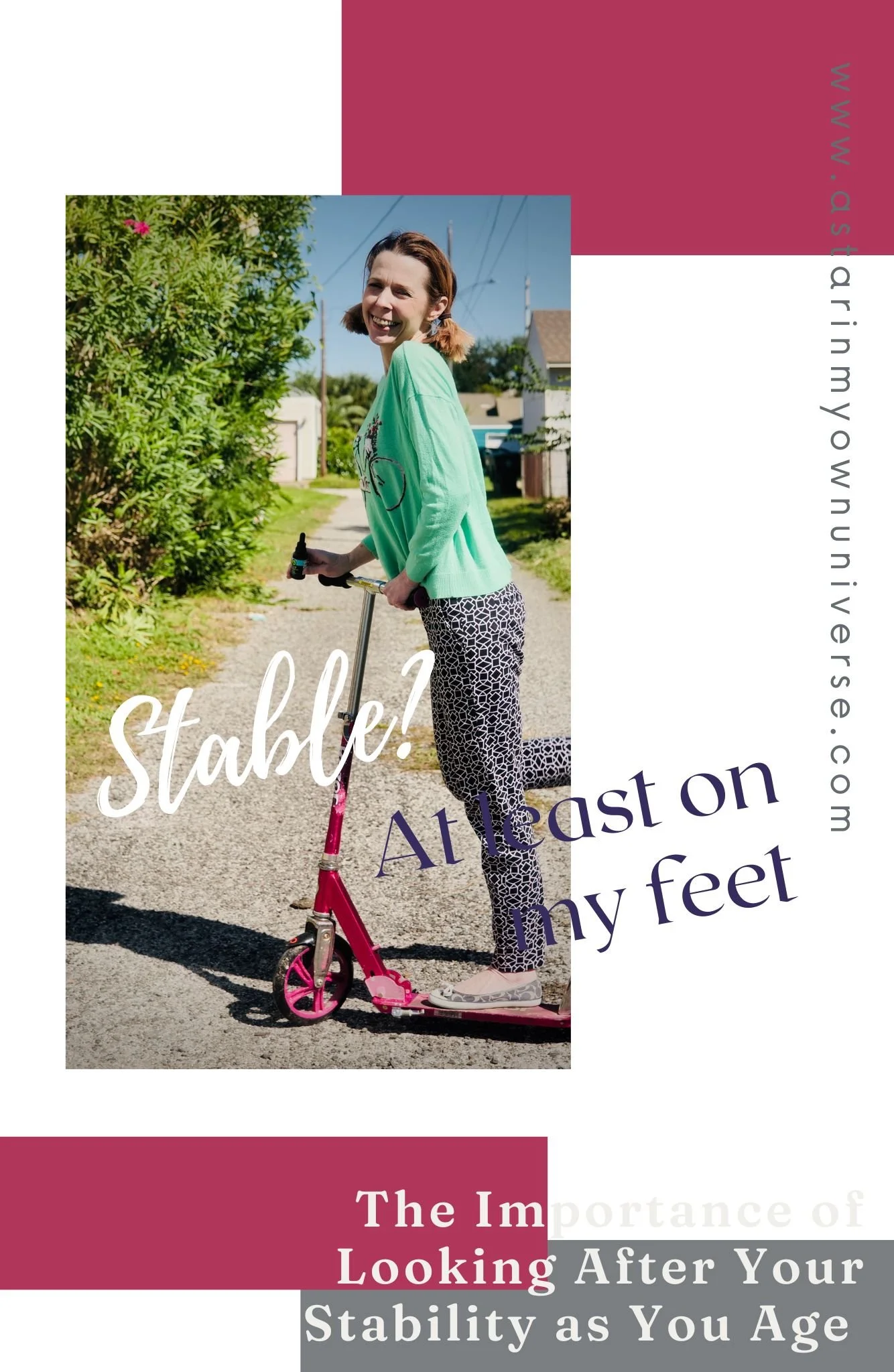Stable? At Least, On my Feet
We all want to be stable, in every sense of the word. But especially on when it comes to being on your feet.
If there is one thing that's absolutely essential to our health and longevity as we age, it's physical stability. We often refer to it as “balance”, and not in that work/life way. Here we’re talking about maintaining a good core to prevent falls or injuries that can have consequences, not just in later life, but now. So, what are the best ways to ensure that stability?
This post may contain affiliate links. All opinions are mine.
It is my Universe, after all.
Rock that Core
Stability exercises come in many different forms. The most important thing to remember is like everything in life, don't overdo it at first. If you’re like me, you get excited to “fix a problem” or “find a new thing: and go crazy. Then you get sore or worn out and lose that vigor. Remember who won the race. Embrace your inner tortoise!!!
I have used yoga off and on throughout my life and recently got back into it. It is all about balance in multiple meanings of the word. Yoga does have exercises that involve balancing on one leg, but remember growth is the goal and there are safe modifications for all of them. Take your time and grow that core. It’s worth it.
If you are looking for ways to improve your stability, you have to remember that, as you gradually get better, you increase the challenge, and this is where you can start to make things a bit tougher. Adding fun sports like surfing and paddleboarding, will not just result in greater balance and stability, but will also challenge your mental focus and agility.
When it comes to paddleboarding, it's a whole world of equipment and outfits, from finding the right paddle to the right paddle board and of course surfboards as well.
Figuring Out Weaknesses
To improve stability, we've got to find our weak points. The cool thing is there are numerous tests for balance and stability that we can try now. For example, the single leg stand, where you stand on your non-dominant foot, close your eyes, and hold your hands on your hips. If you lose your balance, you've got to regain the initial position as quickly as possible. This is one I have done with my neurologist and PCP.
This can certainly be a shock to the system when we think we're actually pretty good with our balance. Even if you've done some exercise before, it is vital to remember that if you are exercising, like lifting weights, in the wrong positions with improper form, you're going to aggravate potential problems over time that could result in injuries that will hinder your abilities to function properly as you get older.
Understanding those weaknesses at the very beginning is so important and we need to think long-term for the sake of our health.
Perform At Top Form
Arguably, so many people think that in order to get stronger, they have to lift weights or do exercises. The biggest problem is that so many people don't do the right exercises for themselves. Cut to me!
During our 20s and 30s, we spend a lot more time hitting the gym, thinking this is the quick way to improve our strength, but this only works if we start with the right form in the first place. What we've got to remember as we get older is that form becomes even more important because we will feel it in those weak spots. Just yesterday, I requested some PT to get good exercises because I lose a lot of muscle tone with my chronic illness.
It's essential to remember that stability and strengthening the right places as we get older will prevent slips and falls, so one day (LONG in the future for me, she says knocking on wood) we can pick up our grandchildren. Don’t forget, however, it's pivotal NOW to our mental health in the process.
If we want to get fitter and healthier we can’t underestimate the impacts of stability.
Stability is at the core of life! (yes… pun intended!)





